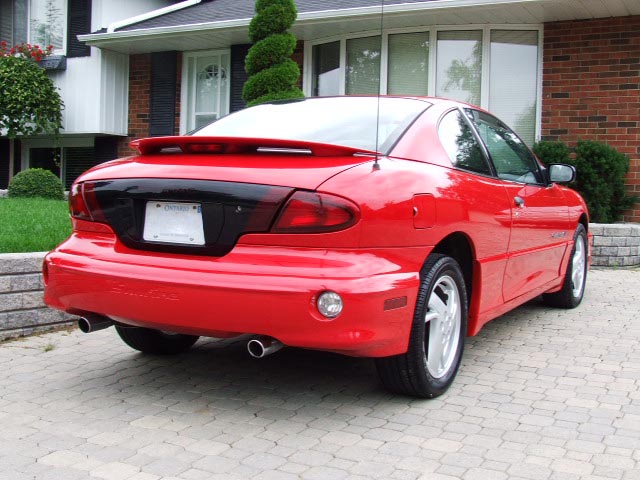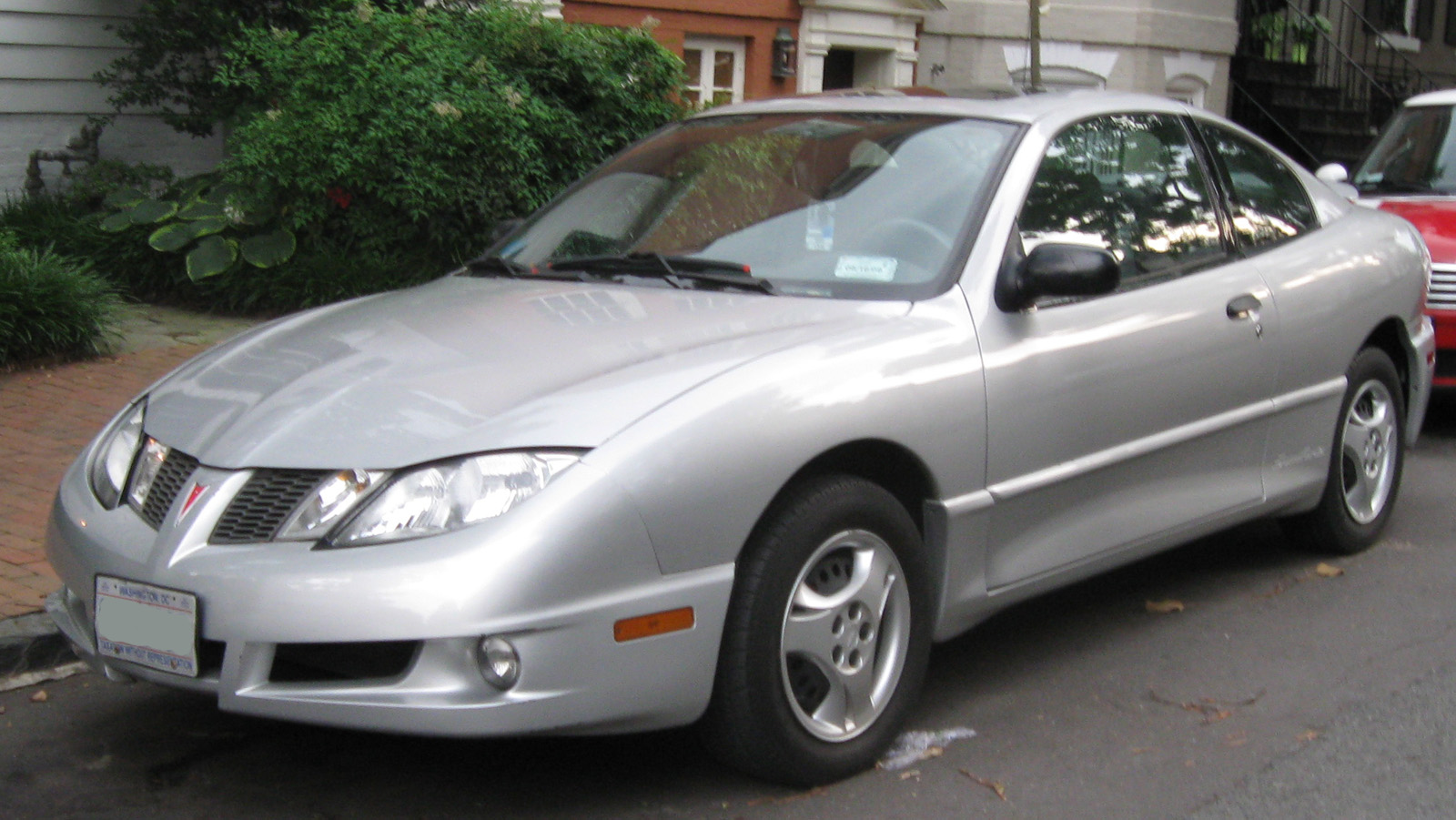
The Pontiac Sunfire was introduced for the 1995 model year as the compact car to replace the Sunbird. Not only was the name changed, but dramatic styling changes were included as well. The new styling was shared with the Chevrolet Cavalier, though General Motors did not change the Cavalier name. Also during this time, the J platform was updated structurally to meet more stringent safety standards. The Sunfire could be purchased as a sedan, coupe, or convertible. All three types came in the standard SE trim level. An upscale GT trim level was available on the coupe and convertible. The GT trim level came standard with the 2.3 liter (LD2) in 1995 or the 2.4 liter LD9 engine (1996–2002), 16-inch alloy wheels, dual exhaust, and a more aggressive looking front fascia. The GT trim level was dropped after the 2002 model year. Originally the convertible was only in the SE trim level until the 1999 model year where it became only available in the GT trim. The convertible was discontinued after the year 2000. The Pontiac Sunfire went through two facelifts, once in 2000 and once again in 2003. In the US, the coupe was the only model available from 2003 to 2005. The sedan continued to be sold in Canada and Mexico until the end of the overall production run in 2005 and a few cars were sold in 2006. Sunfires were built in Lordstown, Ohio (until 2004, before retooling to build the Chevrolet Cobalt and Pontiac Pursuit/G5 models) and Ramos Arizpe, Mexico. The convertible models were built in Lansing, Michigan. Production of the Sunfire ended on June 22, 2005, but a few "2006 models" were sold that year. Over 36,000 Sunfires were sold in the US and 33,724 units were sold in Canada in 2004, each for approximately US$11,500. GM replaced the Sunfire with the G5 for 2007.


The IIHS gives the Sunfire a Poor rating in its frontal crash test.
2004 National Highway Traffic Safety Administration (NHTSA) Crash Test Ratings (coupe):
Frontal Driver: 4/5 stars
Frontal Passenger: 4/5 stars
Side Driver: 1/5 stars
Side Rear Passenger: 2/5 stars
Rollover: 4/5 stars
2002 National Highway Traffic Safety Administration (NHTSA) Crash Test Ratings (sedan):[4]
Frontal Driver: 4/5 stars
Frontal Passenger: 4/5 stars
Side Driver: 1/5 stars
Side Rear Passenger: 3/5 stars
Rollover: 4/5 stars


 Engine Detail
Engine Detail* 1995 – 2.3 L (138 cu in) Quad 4(RPO: LD2) I4, 150 hp (116 kW) and 150 lb·ft (203 N·m)
* 1995–1997 – 2.2 L (134 cu in) 2200 I4, 120 hp (89 kW) and 130 lb·ft (176 N·m)
* 1998–2002 – 2.2 L (134 cu in) 2200 I4, 115 hp (86 kW) and 135 lb·ft (183 N·m)
* 1996–2002 – 2.4 L (146 cu in) Twin Cam (RPO: LD9) I4, 150 hp (112 kW) and 155 lb·ft (210 N·m)
* 2002–2005 – 2.2 L (134 cu in) Ecotec I4, 140 hp (104 kW) and 150 lb·ft (203 N·m)
The base model had the 2.2 L engine from 1995 until 2002. The GT trim level had an optional, much more powerful 2.3 L Quad 4 engine in 1995, which was replaced by the 2.4 L LD9 engine in 1996. The 2.3 and 2.4 liter engines were optional in the 2 and 4 door SE trim level. In 2003, both the 2.2 L and the 2.4 L engines were replaced by the 2.2 L Ecotec engine, and would be the only powertrain available for the remainder of production. The Ecotec engine was also an option for the 2002 model year.

 The IIHS gives the Sunfire a Poor rating in its frontal crash test.
The IIHS gives the Sunfire a Poor rating in its frontal crash test.

 Engine Detail
Engine Detail







0 comments:
Post a Comment